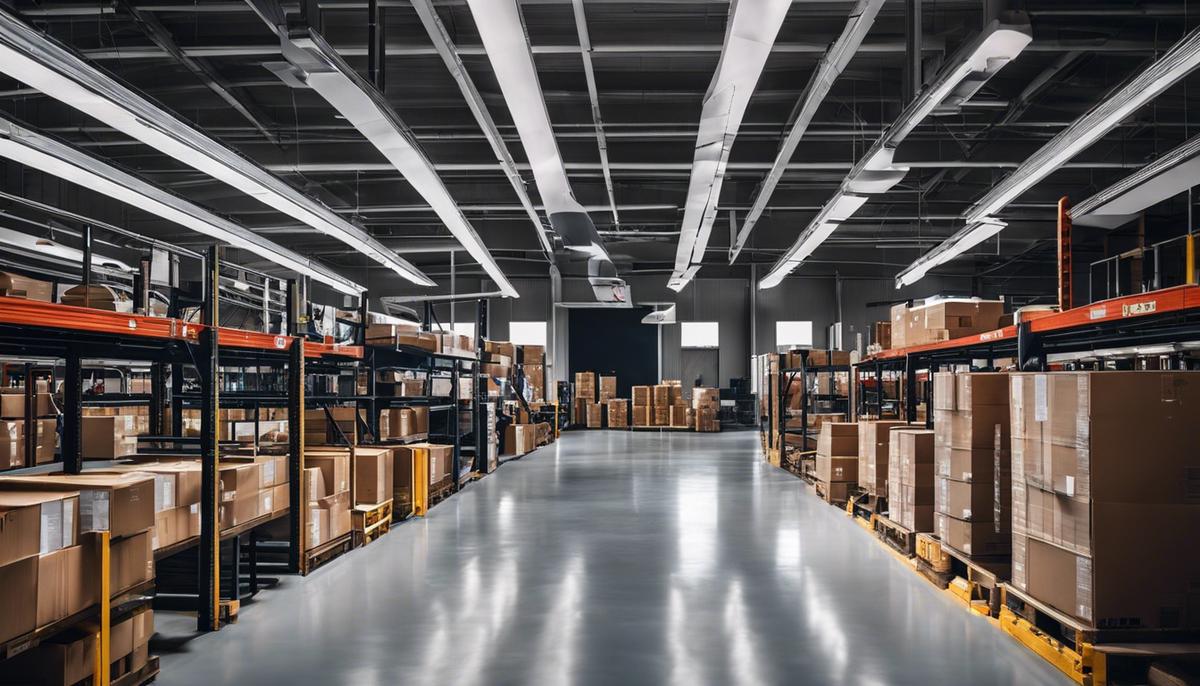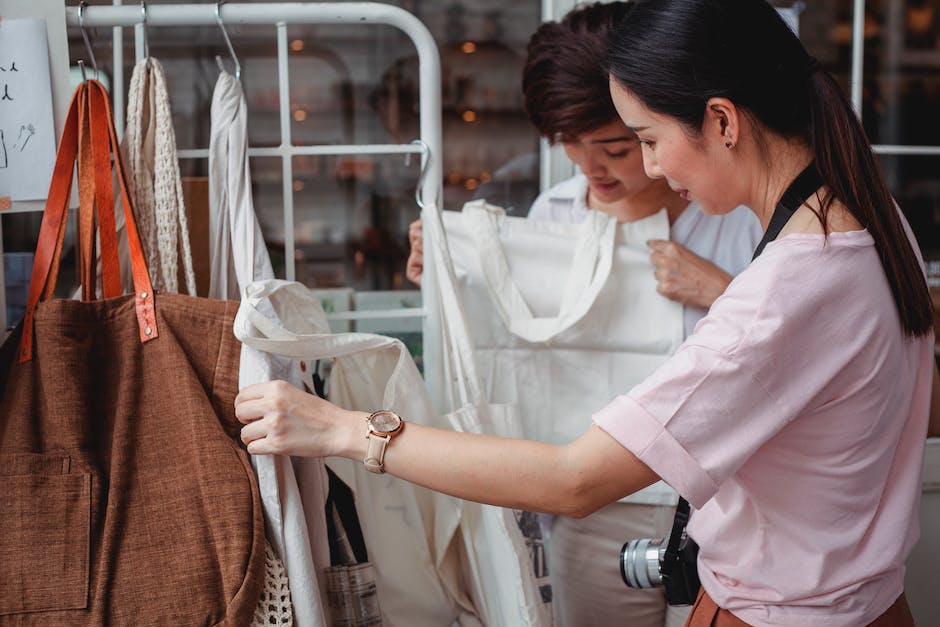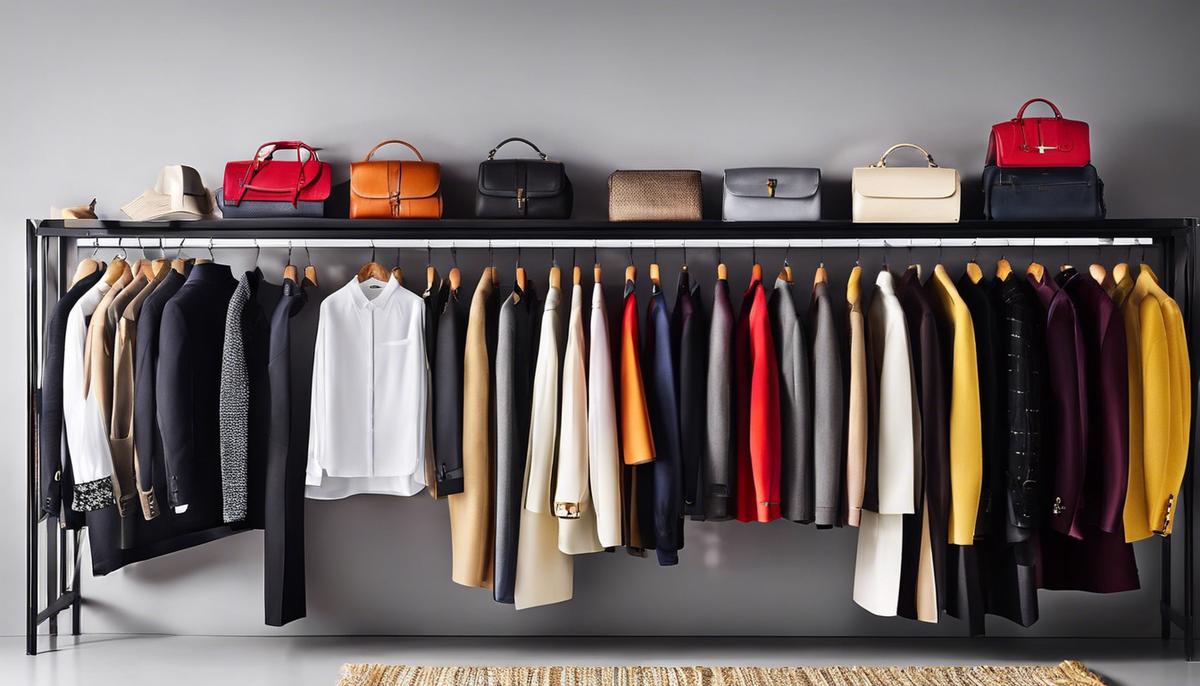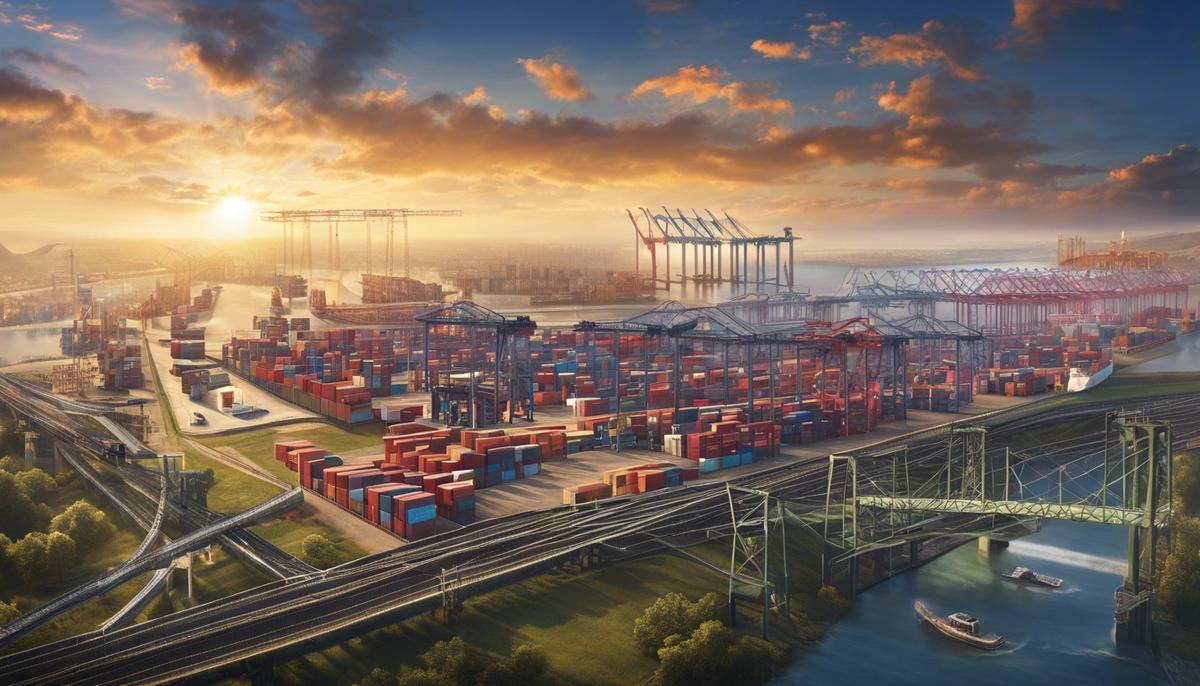The tapestry of the global fashion economy is as rich and complex as the designs that grace catwalks and storefronts around the world. At its core lies a vast, interwoven apparel supply chain that intricately stitches together raw materials, labor, and transportation to deliver style and substance to consumers’ wardrobes. As we pull back the curtain on this dynamic industry, we embark on an analytical journey tracing the elegant contours and the raw edges of the business of fashion. From the depths of sustainability and ethical transformations to the tech-infused innovation driving design and commerce, this exploration reveals the deft interplay between economic vigor and evolving trends that dress the global populace.
The Apparel Supply Chain
Dressed for Success: Powering the Global Economy with Fashion’s Supply Chain
In the vibrant world of fashion, it’s not just about stunning designs and trendy styles; it’s the global apparel supply chain that truly drives the industry’s economic engine. But what makes this supply chain so critical, and how does it keep the cash registers ringing from New York to Paris, and Mumbai to Milan? Let’s dive into the nitty-gritty.
Imagine the global apparel supply chain as the ultimate backstage crew. The supply chain is a complex network that stretches across continents, linking farmers growing cotton, to factories weaving textiles, and all the way to the store where you snag that stylish jacket. Each step is a cog in a massive machine that, when turning smoothly, produces fashion that not only looks good but also contributes billions to the global economy.
Why is this supply chain such a big deal? For starters, employment. The fashion industry provides jobs for millions worldwide, from factory workers in Bangladesh to high-end designers in Italy. It’s a job-creating powerhouse!
Efficiency is the name of the game. Brands that master logistics get their products to market faster. In today’s fast-fashion era, getting the latest looks on shelves before anyone else can make or break a business. Who wants last season’s trends? The race is on to be the quickest, and the supply chain is a brand’s running shoes.
Innovation isn’t just for tech. The apparel industry constantly tweaks its supply chain to squeeze out more efficiency, better sustainability, and faster turnaround times. Smart fabrics, cutting-edge manufacturing techniques, and even robots are now part of the fashion production story. Those innovations keep the industry young, fresh, and economically charged.
But the supply chain’s true secret weapon? Flexibility. Disruptions happen—be it natural disasters, political instability, or pandemics. The ability to pivot and respond to these challenges keeps the flow of fashion goods steady and secures the industry’s economic impact.
And finally, don’t forget the consumer. People’s unquenchable appetite for new threads keeps this whole operation humming. Demand drives supply, and as long as people need to get dressed, the apparel supply chain will be there to outfit them—and in doing so, will continue to fuel a significant part of the global economy. After all, fashion is more than just what meets the eye; it’s an economic powerhouse stitched together by a vast and dynamic supply chain. So, the next time you pull on that perfectly fitted blazer or those must-have sneakers, remember: there’s a worldwide economic symphony playing behind the seams.

Sustainability and Ethical Fashion
Navigating the Green Wave: Sustainable Fashion’s Impact on the Economy
As the trend spotters and entrepreneurs in the business world will tell you, sustainable fashion is more than a fleeting craze; it’s a formidable game-changer in the global economy. Today, sustainability isn’t merely a buzzword—it’s a business model. Forward-thinking brands are integrating eco-friendly practices and pivoting toward green operations, recognizing the lucrative path of conscientious consumerism. The shift is evident: companies that once viewed sustainability as a niche market are now making it their centerpiece.
In the high-stakes arena of fashion, profit margins are no longer the sole indicators of success. Transparency has become a key factor in earning consumer trust, and ultimately, market share. The demand for ethical production and sustainable materials is pushing companies to disclose more about their manufacturing processes. Brands that deliver on these fronts are capturing hearts, minds, and wallets.
The adaptation to a circular economy is not just beneficial for the environment—it’s smart economics. Waste is no longer tolerable, nor is it cost-effective. Brands that understand the lifecycle of their products and aim to minimize waste through recycling and upcycling are carving out a competitive edge. This commitment to circularity is fostering new partnerships, from sourcing recyclable fabrics to collaborating with tech firms that offer cutting-edge recycling technologies.
Speaking of technology, the sustainability revolution is also driving innovation. Whether it’s using artificial intelligence to predict inventory levels and reduce overproduction, or harnessing the power of blockchain for greater supply chain transparency, tech integration is a telltale sign of a brand that’s gearing up for a greener future.
Financial backers and venture capitalists are also taking note. The influx of investment into sustainable startups and green initiatives is evidence of a seismic shift. Funding flows to where the future leads, and right now, it’s heading towards a sustainable horizon.
The multifaceted impact of sustainable fashion on the global economy is palpable. It compels traditional fashion players to rethink and revamp their strategies or risk becoming obsolete. It sparks job creation in new and emerging sectors. It steers research and development towards sustainable materials and eco-friendly production methods. Those leaping into the green wave are not just surfing a trend; they’re steering the industry towards a prosperous and sustainable future.
In this rapidly transforming landscape, there’s no room for passivity. Brands and entrepreneurs must actively engage with sustainability or they’ll be sidelined. It’s a competitive advantage, a driver of innovation, and a blueprint for a resilient, thriving economy. Sustainable fashion isn’t just transforming the global fashion economy; it’s revolutionizing the way business is done.

Technology’s Role in Fashion
Diving straight into the tech revolution, AI and Machine Learning are no longer buzzwords restricted to Silicon Valley. From predicting trends to personalized shopping experiences, AI is at the forefront of a personalized retail revolution. Imagine strolling through an online store curated just for you, with style recommendations that fit like a glove. That’s the new, smart shopping era unfolding.
Now, let’s talk about data. Fashion moguls are swimming in it. From social media insights to online shopping behaviors, data analytics allows brands to get ahead of consumer desires. Gone are the days of guesswork; data-driven decisions are shaping collections, reducing unsold inventory and trimming down those unsightly waste margins.
And speaking of inventory, RFID technology has infiltrated warehouses and stores. This isn’t just about theft prevention – it’s about real-time stock tracking and accuracy that drive down costs and skyrocket efficiency. Smart inventory management leads to smart business, ensuring the right product reaches the right place at the right time.
But let’s not forget 3D printing – no longer confined to the tech geeks’ basements. It’s paving the future of sustainable and on-demand manufacturing. Say hello to localized production and goodbye to excess inventory. The customization possibilities are endless – unique designs at the click of a button, consumed by markets faster than ever before.
Augmented Reality (AR) and Virtual Reality (VR) are stepping off the gaming platform and onto the runway. Virtual fitting rooms are reducing return rates, slashing costs, and providing a futuristic shopping experience – all from the comfort of one’s home.
Inclusivity? Technology says, “Check.” Take a look at inclusive design software creating adaptive clothing for people with disabilities, ensuring fashion speaks to everyone.
Subscription-based models are changing the game for customer retention and value. Monthly curated boxes are keeping consumers excited and engaged, providing consistent revenue streams and invaluable long-term data for future trends.
Now imagine the blockchain. Traceability and authenticity become uncompromised when every thread has a digital footprint. This isn’t just about knocking off counterfeits; it’s about a new era of consumer trust and loyalty.
The smart money is in tech – and it’s not just about the latest app or platform. It’s about fundamentally reshaping supply chains, consumer interactions, and the very fabric of fashion. Tech is not only disrupting but tailoring a new economic model for the fashion industry to wear proudly.
Networking and collaboration between tech gurus and fashion leaders are bridging gaps. With an ever-expanding web of connections, collaboration becomes the new competition, where sharing insights leads to collective growth and success.
Tech is weaving a new tapestry in the fashion economy, stitching innovation with traditional threads. The result? An industry that’s as vibrant as it is savvy, customizable as it is global, and as sustainable as it is profitable.
For the business-minded and the trendsetters, the question isn’t if technology will transform the fashion economy; it’s about how fast we can keep up with its pace. The marriage of fashion and technology isn’t just the future – it’s the now. And it’s redefining what it means to be at the cutting-edge of the economic fabric. The runway is clear; it’s up to savvy entrepreneurs and visionary brands to take the next step.

How Does Fashion Photography Impact the Global Fashion Economy?
The art of fashion photography plays a crucial role in shaping the global fashion economy. High-quality images showcase trends, styles, and products, influencing consumer decisions and driving sales. Fashion photographers have the power to elevate brands and designers, contributing to the overall success and growth of the industry.
Fashion Marketing and Consumption Patterns
Shifting the Lens to Marketing Mastery and Consumer Behavior in Fashion
Delving into the fashion industry’s profitability calls for a sharp focus on marketing strategies and consumer consumption patterns. It’s a dynamic chessboard where every move counts, and understanding the audience’s desires is like predicting the next season’s trends – essential for staying ahead.
A pivotal driver of the fashion industry’s success hinges on targeted marketing strategies. Brands must wield a combination of market intelligence and creative storytelling to craft campaigns that resonate with their audiences. Social media, influencers, and celebrity endorsements aren’t just buzzwords—they’re the conduits to consumers’ hearts and wallets. The savvy deploy these tools to create a lifestyle around their products, one where the consumer can see themselves as part of an aspirational narrative.
Moreover, fashion is now digital-first. E-commerce isn’t just an alternative to brick-and-mortar—it’s a cornerstone strategy. Innovative brands are leveraging data-driven marketing to personalize online shopping, engaging consumers through AI-powered recommendations, retargeting ads, and interactive content. The key is customization; the era of one-size-fits-all is well and truly over.
Equally critical to industry profitability are the consumption patterns shaping the business landscape. Today’s consumers have evolved; priorities have shifted towards ethical consumption, quality over quantity, and the hunt for unique experiences. Fast fashion, while still integral, faces competition from the rise of second-hand markets and rental services—echoing a consumer base that’s ever more conscious about the environment and the value of their purchases.
These trends aren’t fleeting—they reveal underlying trajectories in consumer behavior. Aspirational buyers are no longer impressed solely by exclusivity and price tags; they seek authenticity, sustainability, and a brand narrative that aligns with their personal values. Brands with a keen eye on these changes are the new titans of fashion, dictating terms and defining what’s en vogue.
In summary, the intersection of adept marketing and consumer behavior analytics isn’t just profitable—it’s revolutionary. Fashion brands that master this synergy don’t just create clothing; they weave the fabric of cultural movements and ride the waves of change to the shores of success. As the market evolves, so too must our strategies, keeping a finger on the pulse of the consumer is not just smart business—it’s non-negotiable.

Global Economic Impact of Fashion
Delving into the colossal economic footprint of the global fashion industry, it’s clear that beyond the runway shows and glossy magazine covers, the sector serves as a dynamic economic engine. With an estimated value of over $2.5 trillion globally, fashion is a behemoth driving numerous facets of commerce and trade, yet there’s a seismic shift underway.
Consumer consciousness is on the rise. The modern shopper isn’t just hunting for the best deal; they’re scrutinizing the origin of their clothing, the labor conditions under which it was made, and the environmental impact of their purchases. The ripple effects of this evolving consumer sensibility are staggering – no longer is it enough for brands to tout the latest trends; they must now back up style with substance.
The proliferation of eco-friendly materials presents a compelling narrative. The race is on to seek out alternatives to traditional textiles that carry a heavy environmental toll. Innovative materials like Piñatex, made from pineapple leaves, and mushroom leather are gaining traction. This forward-thinking approach not only placates the environmentally savvy consumer but also opens untapped market spaces and diversification opportunities, broadening the economic influence of the industry.
Meanwhile, fast fashion, steadily falling out of favor, faces stiff competition from the robust second-hand market. Resale platforms like Depop and ThredUp are not just thrifty options for budget-conscious shoppers; they represent a fundamental shift in ownership and consumption models. The second-hand clothes sector could balloon to a formidable competitor of fast fashion within the decade, potentially outpacing traditional retail growth by leaps and bounds.
Another heavyweight in the industry’s economic equation is the amplification of direct-to-consumer (DTC) channels. Brands that once relied on middlemen are steering straight to the source: the buyers. This channel disruption not only trims operational fat, boosting margins, but also fosters a direct line of communication and brand loyalty – a recipe for a robust financial outlook.
The influence of digitalization and smart technology in commerce cannot be overstated. The integration of AI for inventory prediction models, responsive sizing technologies, and sophisticated CRM systems is transforming the fashion business into a high-stakes tech venture. These advancements herald a leaner, smarter industry – poised to leverage big data and consumer behavior to revolutionize inventory management and customer satisfaction.
Beyond the racks and storefronts, the global fashion industry captivates with its duality – it’s a dance of art and commerce, creativity, and economics. Yet, as it pirouettes into the future, the key to unlocking its sustained economic vitality rests in its agility to adapt and innovate. Like a skilled chess player, industry mavens must anticipate societal shifts, harness new technological advancements, and chart clever marketing strategies. The tapestry of global fashion is interwoven with economic threads, each tug on sustainability, digitization, or direct consumer engagement, pulling the industry into its next phase of financial evolution.
Strategically, it’s the proactive entrepreneurs and businesses that recognize these tectonic shifts and align their sails to the winds of change that will endure. With sustainability as the flagbearer and technology as the catalyst, the global fashion industry remains a fascinating testament to innovation’s potent role in shaping economies. From high street to high tech, the fabric of this sector continues to evolve, proving that in the realm of fashion, adaptation is always in style.

The heartbeat of the fashion industry echoes across the globe, reverberating with economic ramifications and sartorial significance. Fashion is not solely about the garments we drape ourselves in; it’s a reflection of cultural shifts, technological progressions, and an ever-changing landscape of consumer desires and global markets. By understanding the fashion economy’s vast runway—from the meticulous crafting of brands to the ripples they create in worldwide fiscal waters—we grasp not only the silhouette of an industry but also the shadow it casts upon the world stage, shaping economies one thread at a time.










